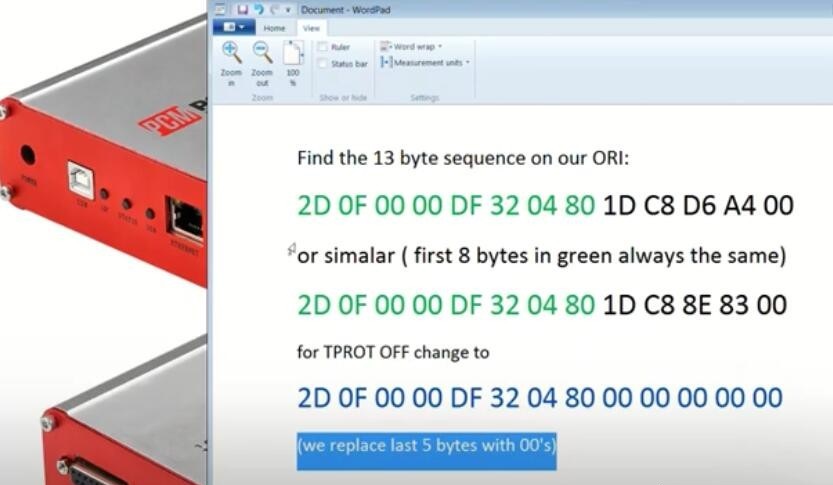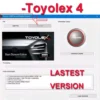What is Tuning Protection AKA TPROT? 9
One of the key components that make modern cars run is the Engine Control Unit (ECU). The ECU is responsible for controlling various aspects of the car’s engine, such as fuel injection, ignition timing, and throttle control. In recent times, there has been a growing interest in tuning the ECU to enhance the performance of cars. However, this has led to the development of various protection mechanisms, such as TPROT, to safeguard the ECU from unauthorized modifications. In previous blog post we discussed about what is ECU Checksum and today we are talking about other thing that give ECU tuners headache – TPROT!
Explanation of what TPROT is
TPROT, short for “tuning protection”, is a security feature that is embedded in the Engine Control Unit (ECU) of modern cars. TPROT is designd to prevent unauthorized modifications to the ECU, particularly those that could potentially damage the engine or other critical components of the car.
Importance of TPROT in ECU
The importance of TPROT in ECU cannot be overstated. Without this feature, it would be relatively easy for unauthorized individuals to make modifications to the ECU, leading to potentially catastrophic consequences. This is particularly important in the case of high-performance cars, where even minor modifications can significantly impact the engine’s performance and overall safety.
Brief overview of the blog post
In this blog post, we will discuss what TPROT is, how it works, and its importance in ECU tuning. We will also examine the different types of TPROT, why it is essential to bypass TPROT, and the risks associated with bypassing this security feature.
Importance of ECU in modern cars
The importance of the ECU in modern cars cannot be overstated. Without this component, cars would not be able to operate as efficiently as they do today. The ECU ensures that the engine operates within the manufacturer’s specifications, thereby ensuring that the car is safe and reliable.
What is TPROT?
Definition of TPROT
TPROT,as previously stated, is a security feature that is embedded in the ECU of modern cars. The primary purpose of TPROT is to prevent unauthorized modifications to the ECU,particularly those that could potentially damage the engine or other critical components of the car.
Importance of TPROT in ECU
The importance of TPROT in ECU cannot be overstated. Without this feature, it would be relatively easy for unauthorized individuals to make modifications to the ECU, leading to potentially catastrophic consequences. This is particularly important in the case of high-performance cars, where even minor modifications can significantly impact the engine’s performance and overall safety.
How TPROT works
TPROT works by encrypting the ECU’s firmware and implementing various security mechanisms to prevent unauthorized access to the firmware. In essence, TPROT makes it difficult for individuals to modify the ECU’s firmware without the proper knowledge and tools.
Types of TPROT
There are various types of TPROT used in modern cars. Some of the most common types include flash memory protection, checksum verification, and digital signatures. Flash memory protection prevents unauthorized access to the ECU’s firmware by encrypting the firmware and making it difficult to read or modify. Checksum verification is a process that verifies the integrity of the firmware by checking its checksum value. Digital signatures, on the other hand, are used to verify the authenticity of the firmware by ensuring that it has been signed by a trusted authority.
Bypassing TPROT
While TPROT is designed to prevent unauthorized modifications to the ECU, there are ways to bypass this security feature. Bypassing TPROT involves finding vulnerabilities in the ECU’s firmware and exploiting them to gain access to the firmware. This can be done using various tools and techniques, such as using a boot loader or exploiting a vulnerability in the firmware. However, it is important to note that bypassing TPROT is illegal in most countries and can lead to serious consequences. For Bosch EDC17c10 and EDC17C60 ECU’s mostly fitted in Peugeot and Citroen 1.6HDI cars we have created this free software tool for automatic removal of TPROT.
Why is it essential to bypass TPROT?
Reasons for bypassing TPROT
There are several reasons why individuals may want to bypass TPROT. One of the primary reasons is to tune the ECU to improve the car’s performance. Tuning the ECU involves modifying the firmware to adjust various engine parameters, such as fuel injection timing and ignition timing, to enhance the engine’s performance.
Risks associated with bypassing TPROT
Bypassing TPROT can be risky, both for the car and the individual attempting to modify the ECU. In most cses, bypassing TPROT requires advanced knowledge of the ECU’s firmware and the use of specialized tools. Without this knowledge and expertise, there is a high risk of damaging the engine or other critical components of the car.
Additionally, bypassing TPROT is illegal in most countries and can lead to serious consequences, such as fines and even imprisonment. It is, therefore, essential to avoid bypassing TPROT and instead seek out legal methods of tuning the ECU.
Final Thought
In conclusion, TPROT is a critical security feature that is embedded in the ECU of modern cars. Its primary purpose is to prevent unauthorized modifications to the ECU, particularly those that could potentially damage the engine or other critical components of the car. While there are ways to bypass TPROT, it is illegal and can lead to serious consequences. It is, therefore, important to seek out legal methods of tuning the ECU and avoid bypassing TPROT at all costs. By doing so, we can ensure that our cars are safe, reliable, and perform at their best.







I don’t think there is tuning protection in EDC17C10 , only in EDC17C60. So this tool is not needed for edc17c10 ecu.
great guide keep it up!
can you do trpot off for VW tiguan 2014 2.0tdi ?
You have VR (virtual read) files these days , mostly on original tools that bypass tprot successfully
Are only EDC17 are affected by tprot or other ECU aswell – sid, pcr2.1 etc..
If tuning is good why factory don’t do it from first place?
Love your blogs, keep it up the good work
Thomas
you did a great job of breaking down TPROT in ECU so even non-techies like me can understand it. I never realized how crucial it is to have protection against unauthorized access and tampering. It’s crazy how there are different levels of TPROT and they can be configured to fit different applications. It’s like they have to be mind-readers to know what kind of security measures to implement!
Hello, do you know how to remove tprot from Hyundai Sants Fe EDC17 ecu?